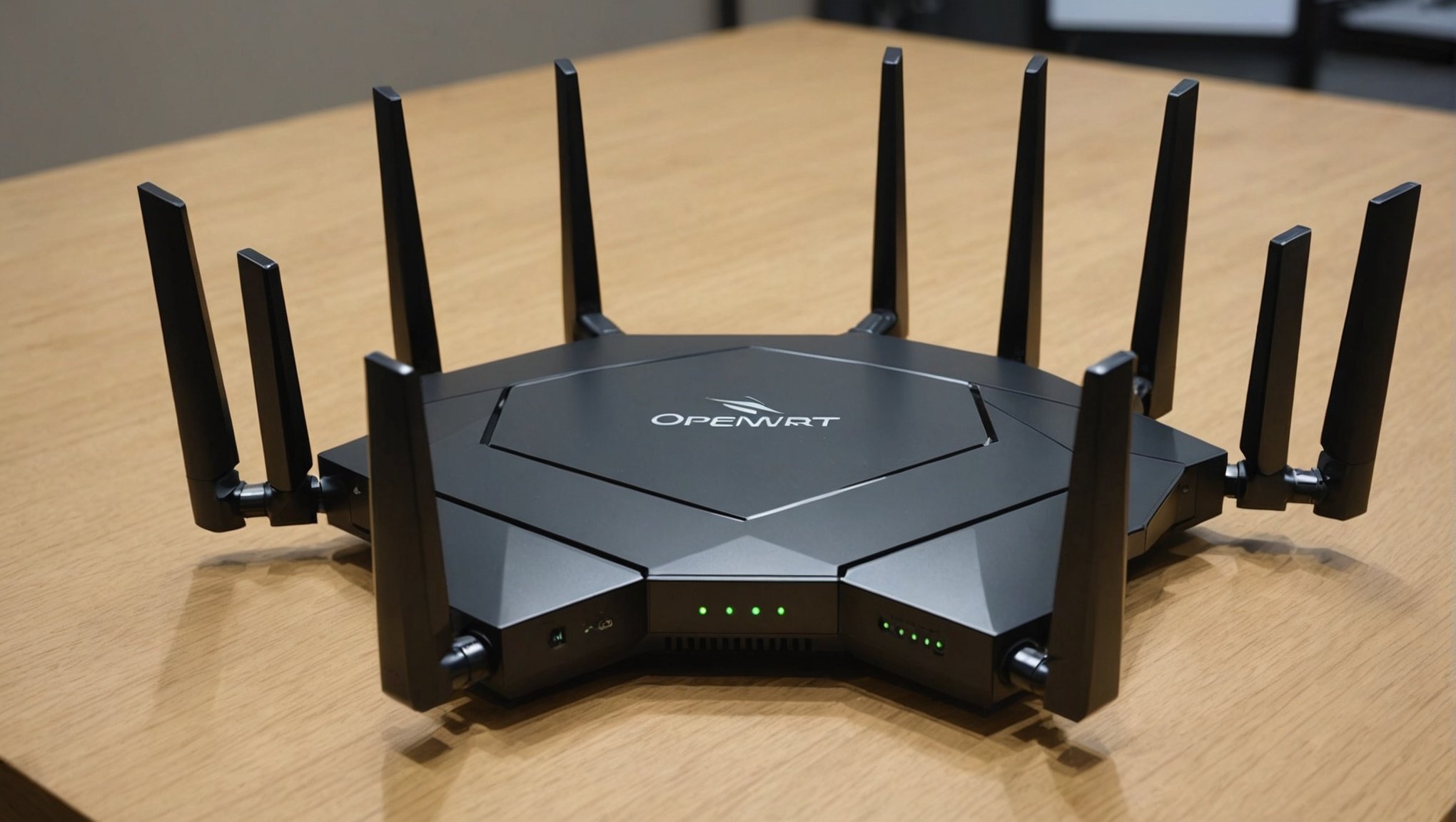In today’s interconnected digital age, home and business internet users alike are seeking more robust and reliable wireless networks. Mesh networks, with their ability to offer superior coverage and eliminate ‘dead zones,’ are gaining popularity. This article will walk you through the steps of setting up a mesh network using OpenWrt, an open-source operating system for your routers.
Understanding What a Mesh Network Is
Before we dive into the details of setting up a mesh network, it’s important to understand what exactly this term means. A mesh network is a type of network configuration wherein each device (often referred to as a ‘node’) is connected to several other devices within the network. Unlike traditional wireless networks, where each device relies on a single router for internet access, in a mesh network, devices can access the internet from multiple points, creating a ‘mesh’ of coverage.
Additional reading : How do you configure a site-to-site VPN between an on-premises network and AWS VPC?
This enhanced configuration resolves the issue of ‘dead zones’ – areas within your space where the wireless signal is weak or non-existent. Mesh networks ensure that all areas of your home or office have strong, reliable, and fast internet access.
What is OpenWrt?
OpenWrt is a custom, open-source firmware for routers, originally designed for embedded systems. This operating system has numerous advantages over default system software provided by router manufacturers. OpenWrt allows users to fully exploit the capabilities of their routers, providing complete control over the device’s configuration and operation.
Additional reading : What are the steps to configure Kubernetes RBAC for fine-grained access control?
By using OpenWrt, you gain the freedom to customize your network to your specific needs, including the option to set up a mesh network. This setup can significantly enhance your wireless coverage, ensuring you have a reliable and steady internet connection in every corner of your space.
Setting Up Your Mesh Network with OpenWrt
Now that we’ve covered the basics of a mesh network and OpenWrt, let’s move on to the main focus: setting up your mesh network with OpenWrt.
First, make sure your routers are compatible with OpenWrt. Not all devices are, so it’s important to check the OpenWrt website for a list of supported devices.
Once you’ve confirmed compatibility, you’ll need to install OpenWrt on your routers. Follow the detailed instructions on the OpenWrt website to do this. Remember that incorrect installation can render your device non-functional, so proceed with caution.
After OpenWrt is installed on your routers, it’s time to configure them for the mesh network.
-
Configure Wireless Interface: Go to the wireless interface section in the OpenWrt configuration menu. Here, set the network mode to ‘Mesh’. Ensure you are using the same settings, like the SSID, encryption, and password, on all routers.
-
Set Band and Channel: Choose the band (2.4 GHz or 5 GHz) and channel for your wireless network. The 5 GHz band will give you a faster connection, but the 2.4 GHz band provides better coverage.
-
Configure Mesh Interface: Now proceed to set up the ‘Mesh’ interface. Make sure you choose the ‘Mesh’ option in the network setup, and ensure the IP address and subnet mask are correctly configured.
-
Set DHCP and DNS: Finally, configure the DHCP and DNS settings. Ensure you set the DHCP mode to ‘server’ and configure your preferred DNS servers.
Ensuring Optimal Performance of Your Mesh Network
After setting up your mesh network, it’s essential to regularly monitor and maintain it to ensure optimal performance. OpenWrt offers extensive diagnostic tools and status reports to help you in this task.
Do regular checks to ensure all routers are functioning properly and that there are no ‘dead zones’ in your coverage. If you notice areas with weak signals, consider adding more devices to your mesh network to improve coverage.
Make sure you keep your OpenWrt system updated with the latest releases to benefit from enhanced features and security updates.
In conclusion, setting up a mesh network using OpenWrt can significantly improve your wireless coverage, providing a steady and reliable internet connection throughout your space. With careful configuration and regular maintenance, you can enjoy a superior internet experience with no ‘dead zones.’
Managing Your OpenWrt Mesh Nodes and Access Points
After configuring your routers for a mesh network, the next step is to establish and manage the various nodes and access points within the network. This is crucial as it allows for optimal distribution of the wireless signal.
A mesh node is a device within the mesh network that helps relay data. As mentioned earlier, each device within the mesh network is a node, but the primary router (where the internet connection enters your network) is often the primary node or mesh gateway. Other nodes should be arranged to ensure complete coverage of your space.
Access points, on the other hand, are the different points from which devices can connect to the Wi-Fi network. In a mesh system, every node can act as an access point.
For OpenWrt, to manage nodes and access points, you need to install the wpad-mesh and batman-adv packages. Go to the ‘Software’ section of your router configuration menu, search for these packages, and install them. Wpad-mesh is for the management of wireless mesh nodes, while batman-adv is for handling advanced mesh networking features, including the creation of access points.
To configure each node, go to the network configuration menu and select the ‘Wireless’ section. Here, add a new interface for each node. For each interface, ensure you set the network mode to ‘Mesh’ and use the same settings as before – SSID, encryption, password, and the 2.4 GHz or 5 GHz band. Remember to set the mesh ID (Mesh SSID) and Mesh BSSID to the same values for each node.
Finally, save your changes and hit the ‘Apply’ button to bring the nodes online. At this point, your mesh network should be up and running, with each router acting as a node and access point.
Optimizing Your OpenWrt Mesh System
To make the most of your mesh network, you need to pay attention to the performance of individual nodes and the network as a whole. This process involves monitoring the connection strength and data flow between nodes and performing necessary adjustments. Your goal is to ensure the maximum signal strength throughout your space.
The ath10k-firmware-qca package within OpenWrt comes with diagnostic tools that allow you to monitor the performance of your mesh network. It provides detailed information about the connection strength and data transfer rates between nodes.
If you notice a node with a weak signal or low data transfer rate, you may need to move it to a different location or adjust its settings. For example, changing the band from 5 GHz to 2.4 GHz can increase the node’s range, albeit at a slightly slower speed.
It’s also essential to keep the firmware of your routers up-to-date. Regularly check the OpenWrt website for updates to the firmware and other packages like wpad-mesh, batman-adv, and ath10k-firmware-qca.
Through careful management and optimization, you can make sure your mesh system delivers the robust, extensive coverage that defines the advantage of mesh networks.
Mesh networks, with their ability to provide comprehensive coverage and eliminate dead zones, represent the future of wireless networking. OpenWrt, with its open-source nature and robust features, provides an excellent platform for setting up such a network.
By understanding the roles of mesh nodes and access points, you can effectively manage your mesh system. Additionally, by monitoring and optimizing the performance of your mesh network, you can ensure that it delivers the best possible internet experience.
Therefore, setting up a mesh network with OpenWrt not only provides extensive coverage but also offers the freedom to customize the network to your specific needs. While the setup process might seem complex at first, with careful planning and execution, it becomes manageable. The result is a robust and reliable internet connection that covers every corner of your space.






